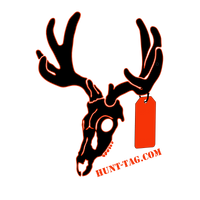
Essential Tracking Skills Every Hunter Should Practice
Successful wildlife hunting depends on more than just luck or patience. It involves understanding the environment and the animals within it.
Developing solid tracking skills is a fundamental part of becoming a more effective hunter. It's about learning to read the story the ground tells, interpreting clues left behind by game, and using that information to anticipate an animal's movements.
Good tracking skills can make the difference between going home empty-handed and a successful harvest.
Let's explore the essential tracking skills every hunter should have in the bag.
Why Tracking Skills Matter in Wildlife Hunting
Animal tracking is observing and interpreting signs left by animals to determine their presence, species, direction of travel, behavior, and even health.
This goes way beyond simply spotting and following footprints.
Accurate animal tracking involves noticing disturbed leaves, broken twigs, feeding signs like browsed vegetation, droppings (scat), and rubs or scrapes on trees.
Each sign is a piece of a puzzle.
Mastering these skills helps you locate game and ensures ethical hunting practices by minimizing the unnecessary pursuit of protected animals.
Animal Signs Every Hunter Should Recognize
-
Tracks. Tracks are the most obvious clue. Learn to identify species-specific footprints and understand their size, shape, and stride patterns.
-
Scat. Animal droppings provide insights into diet and recent activity. Fresh scat indicates nearby game.
-
Trails. Well-worn paths often lead to feeding or watering areas. Look for trampled vegetation or muddy paths.
-
Feeding Signs. Broken branches, stripped bark, or chewed plants indicate feeding activity. The fresher these signs, the closer you are to your target.
-
Beds. Flattened grass, leaves, or snow show where an animal rested. The size and shape suggest the species, and freshness indicates how long it was used.
-
Scratches and Rubs. Bucks often rub their antlers on trees, leaving visible marks. Scrapes are areas where they paw the ground and urinate, typically during the rut. These indicate territorial marking and breeding behavior.
Tracking Techniques for Different Terrains
Understanding the terrain is crucial for effective tracking. Here's how to adapt your skills to various environments.
-
Forest Tracking. In wooded areas, look for broken twigs, disturbed leaves, and tracks in soft soil. Pay attention to game trails leading to water sources.
-
Open Fields. Tracks are easier to spot in open areas but can be affected by wind or rain. Focus on subtle signs like bent grass or faint impressions.
-
Snowy Terrain. Snow provides clear tracks but melts quickly. Assess track depth and spacing to estimate the animal's size and speed.
-
Rocky Ground. Tracks may be more challenging to find on rocky terrain. Look for scratches on stones or displaced pebbles.
Interpreting Tracks
Once you spot a track, it's time to analyze it!
-
Species Identification. Learn the unique characteristics of different animal tracks. For example, deer tracks are heart-shaped with pointed tips, while elk tracks are larger with rounded edges.
-
Direction and Speed. Examine stride length and depth to determine movement speed and direction.
-
Age of Tracks. Fresh tracks have sharp edges and undisturbed soil; older ones appear weathered or faded.
Tips for Sharpening Your Tracking Skills
Tracking takes practice and patience. Here are some tips to refine your abilities.
-
Start Small. Begin by tracking smaller animals like rabbits or squirrels before moving on to larger game.
-
Use Binoculars. Scan ahead for movement or distant signs without disturbing the area.
-
Stay Quiet. Minimize noise as you follow tracks to avoid spooking game.
-
Learn from Experts. Join hunting groups or workshops to gain hands-on experience.
-
Practice Regularly. Spend time outdoors observing wildlife behavior and signs.
Enjoy a Compliant Hunt
When you're deep in concentration, following a fresh trail, the last thing you want is to fumble for your paperwork. Especially after a successful shot, accurately following the animal often requires focus and careful movement.
Keeping your license and hunting tags secure in something like a Hunt-Tag Wallet means one less thing to worry about when your tracking skills are put to the test. You can stay focused on the trail, knowing you're ready to tag your animal correctly as soon as you recover it.
Proper animal tracking and proper tagging go hand-in-hand with responsible wildlife hunting.
Explore our state-specific kits today and simplify your tagging process!




